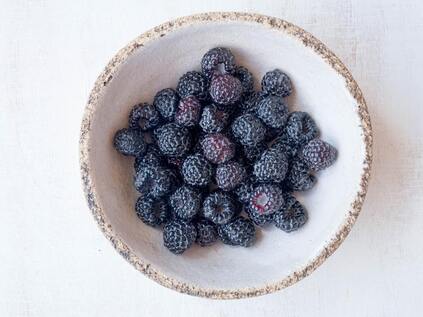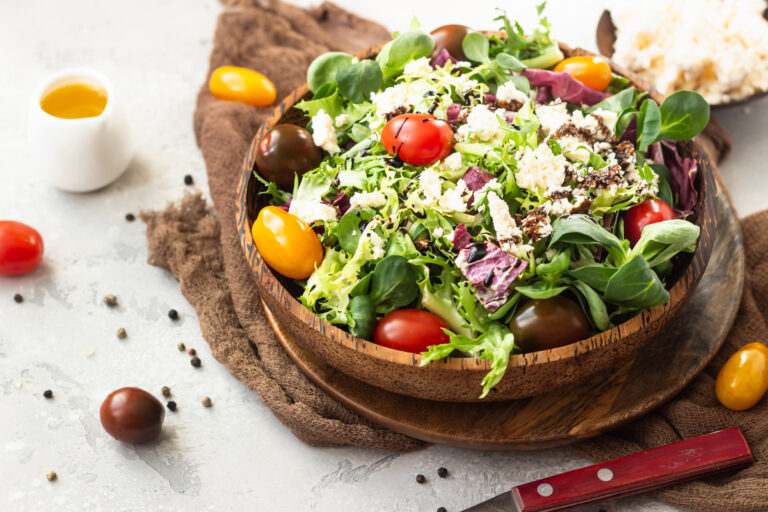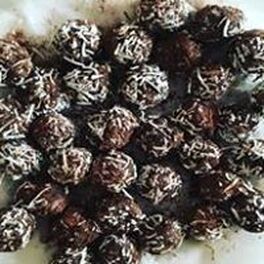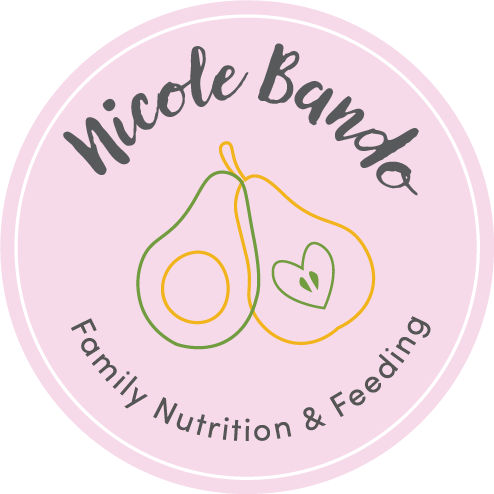Nicole Bando | Dietitian & Lactation Consultant
Search by typing & pressing enter
Search by typing & pressing enter
Search by typing & pressing enter
Nutrition and Breastfeeding Articles

‘It is hard to know what to believe with so much conflicting nutrition
information. I provide you with the latest evidence-based facts.’
Categories


Thanks to Victoria Hobbs, Deakin University for data collection.
It’s time to examine a snack that has been trending for some time; the bliss ball. Are they actually a healthy snack and what sort of marketing tricks to the companies use to lure us in? I look at kilojoules/calories per serve, as well as fibre, sugar and protein per 100g. What are the top 3 ingredients – do they contain sugar, do they contribute nutrients? A good guideline for a snack is generally 300-600kJ, depending on your nutrition goals.
Let’s compare products:
- Special K protein bliss bites: 420kJ/serve, moderate fibre, low sugar and a good source of protein (from milk). The fats and protein may improve satiety.
- Carmen’s Bliss Balls : ~312kJ/serve (similar calories to an apple), 6-10g fibre/100g, high sugar 39-47g/100g across the range. A source of refined sugar, the primary ingredient is dates. Contain nuts, so a valuable source of protein. However, will 1 bliss ball fill you up? Consider how many you need in order to feel full and note if they take you through until the next meal.
- Creative Gourmet Super Balls (fridge section): 525kJ/serve (equivalent to 1.5 apples), moderate fibre 6g/100g (2.1g per serve, an apple delivers up to 3-5g), high sugar 24.5g (mainly from dates as the first ingredient), good source of protein (whey), though also high in saturated fat from coconut cream.
- I Quit Sugar’ Superfood protein ball mix:
This product is so directly misleading. Initially appears to be a good contender for a healthy snack: it is high in fibre, low in total sugars (<3g/100g) and 486kJ per serve. Its main claim to fame is being fructose free.
However, THIS DOES NOT INCLUDE the ingredients that must be added to the mixture to actually make the protein balls. Once the rice malt syrup, coconut oil and coconut are added, these protein balls lose the ‘no sugar’ kudos and increase to 640kJ/serve, refined sugars increase to ~25g/100g and they are a source of saturated fat from all of that coconut. This is marketing genius at its best. Not much better than a muesli bar and so very misleading.
Note: I have checked to see if I can locate this product and it is temporarily unavailable. Check other mixes such as these to see if the nutrition information panel reflects ALL ingredients, or dry portion only. - Bounce Peanut bliss balls:
A high energy snack with 880kJ/serve, they are low fibre, high sugar, despite being a good protein source – (derived from ~30% nuts). The second listed ingredient is brown rice syrup. This is OK as an occasional snack if you are very active, but may not fill you up for long and could contribute to weight gain over time. - Bounce Cacao raspberry balls:
High energy at 710kJ per ball, high sugar and moderate fibre. A better choice than the peanut ones, but not by much.
My verdict? Choose the top 2 products, stick to the serving size. Enjoy occasionally and observe if they fill you up enough to last until the next meal. They are similar in nutritional profile to muesli bars. Alternatives such as fruit, low fat dairy, nuts, seeds and grains provide more benefit nutritionally.
Why not make your own bliss balls at home to enjoy occasionally? This way you can reduce the serving size and choose the ingredients that will be healthiest. I like this recipe from shift nutrition:
https://shiftnutrition.com.au/recipe/chocolate-peanut-butter-bliss-balls/ (~300kJ/serve)
DISCLAIMER: I RECEIVE NO FINANCIAL BENEFIT FROM REVIEWING THESE PRODUCTS, THIS IS AN INDEPENDENT PRODUCT REVIEW BASED ON MY PROFESSIONAL OPINION. I HAVE REVIEWED A SMALL RANGE OF AVAILABLE SUPERMARKET PRODUCTS, THIS IS NOT AN EXHAUSTIVE COMPARISON.
